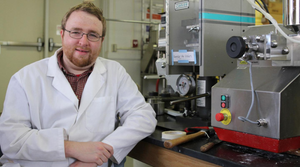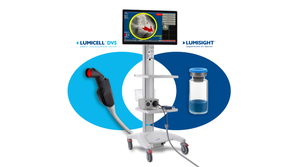A successful partnership between medtech companies and contract manufacturing organizations can help OEMs get products to market faster, meet quality requirements, support Design for Manufacturability, and reduce costs and inventories.
June 18, 2020

Outsourcing contract manufacturing can have many benefits for both original equipment manufacturers (OEMs) and contract manufacturing organizations (CMO). Ideally, process and production decisions should be shared, but there are times when CMOs must take directives from the OEM partners. MICRO’s Carl Savage, vice president, business management, answered a few questions for MD+DI on how CMOs and OEMs can work together to ensure each project’s success.
As a full-service medical device contract manufacturer, what is your view on customer development programs that are not commercially successful long term?
Savage: We operate in a fast-paced, customer-centric bottom-line medtech market, where a “win” is usually considered to be a development project that achieves long-term market presence and profitability as defined by the original equipment manufacturer (OEM) and the industry as a whole. That is certainly a practical way to define success. For MICRO, our company looks at each project as an opportunity to gain experience and expertise to better serve future customers and grow as a business. We learn from every project and customer relationship, take those learnings, and apply them to the next project so each successive client relationship and our business overall is more successful and adaptable over time. In this view, medical device development programs do not have to necessarily realize lasting market presence to be viewed as successful. With each program we examine the pain points and often re-evaluate processes or techniques that allow us to grow in a new direction. That can be a huge positive.
Can you describe an example?
Savage: Absolutely. We had overseen a medical device development program that ultimately did not succeed commercially for our OEM customer but took our business in a new operational direction. We are a much more diversified and a stronger company today with core capabilities in management, supply chain logistics, and full device assembly that were not areas of expertise for MICRO before the project. The experience allowed us to evolve our business model and strategy for the better.
The OEM in this case was a startup company with what appeared to be a breakthrough technology for an articulating device that replicated hand motion. Based on the evidence, we believed this product had the potential to be a game changer for single-incision laparoscopic surgery and revolutionize that market. MICRO had not at that point worked on a complete device and we were eager to take on a new challenge and expand our capabilities. Because of the project’s scope and complexity, we established full-assembly capabilities including plastic molding, metal injection molding, cabling, and laser operations, which laid the foundation and set us on a path to become a full-service contract manufacturer.
Our focus today and our success as a company is largely due to this development program that did not achieve lasting market success. The silver lining was the company’s intellectual property was acquired and is now viewed as the precursor to robotic-assisted surgical technology in use today. It certainly was a stepping stone and paramount to work that we do today.
Why is the OEM-CMO partnership more important than ever before?
Savage: Outsourcing has always played an important role in product development. Today, the role of the CMO is more critical than ever because competition and market forces require such a high degree of speed and agility in manufacturing. Forging a successful partnership can help OEMs get their products to market faster, meet quality requirements, support Design for Manufacturability, and reduce the need to maintain costly manufacture, finishing, and assembly operations and parts and product inventories. Each partner can focus on core competencies and stay lean on head count, facilities, and equipment. It is truly a win-win if done correctly.
What are the key factors for a successful OEM-CMO partnership?
Savage: CMOs should fully understand the needs of the customer and align on engineering capabilities, resources, and manufacturing techniques with their OEM partners early on and well before a project officially kicks off. They should spend time upfront with every customer to fully understand their sales, marketing, and distribution plans because these will impact all development milestones and timelines upfront and help everyone to understand commercial expectations from the get-go.
All projects experience unanticipated hiccups, and a product can fail feasibility testing, have a regulatory setback, or require a redesign because of any number of reasons. These types of situations can impact timelines, costs, and resources. Clear communication and information sharing can help mitigate problems that inevitably arise with any development program and help both sides identify solutions for resolving the issues quickly. That is a critical success factor.
What advice do you have for other CMOs?
Savage: Look at every customer project as an opportunity to grow and expand your company and its offerings. Even if a project fails to gain traction in the market or achieve profitability, there is always a silver lining. It just may not be immediately apparent. In the case I mentioned, MICRO turned a customer challenge into an opportunity to expand our capabilities and offer more value to the marketplace. We would do it exactly the same way today.
About the Author(s)
You May Also Like


